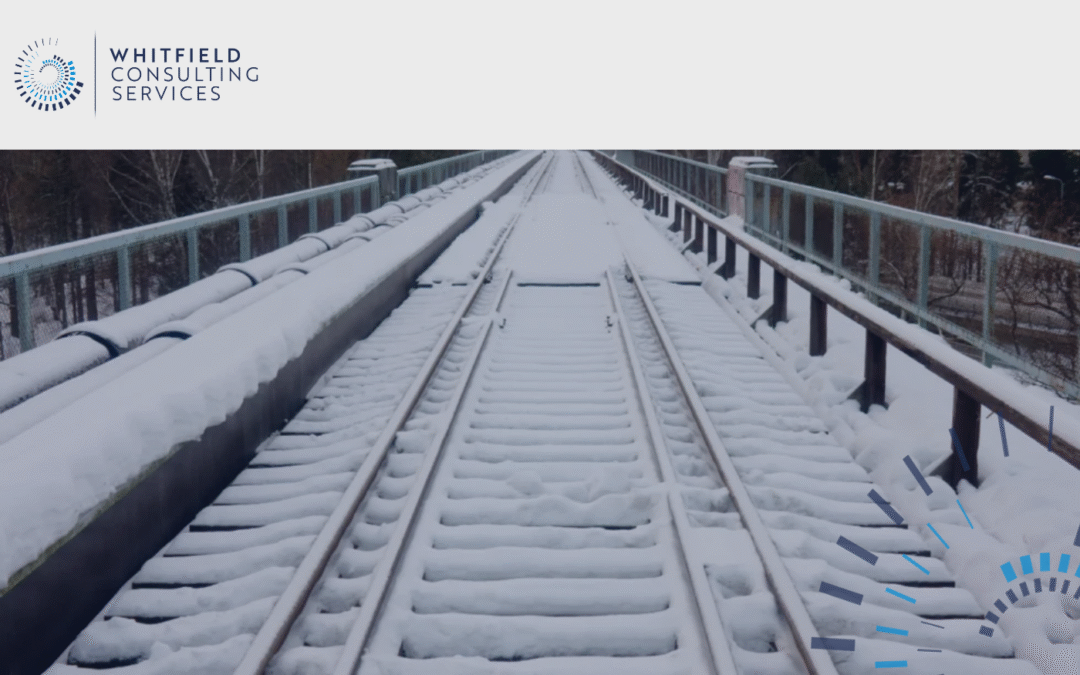During 2022 the UK experienced twelve months of record and near-record-breaking temperatures, high winds, droughts, flooding and cold snaps. Meteorologists are already sounding the alarm bells for a repeat performance in 2023. How does this severe weather impact the design work that WCS carries out, and how can civil engineering design take into account the extreme weather events predicted to occur in the coming decades?
Working to the right rules
“Many of the projects we work on are strongly governed by standards,” explains Ioannis Iliadis, Senior Engineering Manager at Whitfield Consulting Services. “Those could come from bodies such as Network Rail, or be Eurocodes, British Standards or from the Building Regulations.”
During the design phase of any project, which is where WCS spends most of its time, the implication of extreme weather is the need to design structures sufficiently robust that they will withstand some inevitable extreme weather event that will occur at some point in the future. “This is formalised within our design work by a statement of probability”, adds Ioannis. “For example, a project may require that we have to account for a ‘once in 40 year’ event, or perhaps an even worse ‘once in 100 year event’.” Historical records and statistical analysis have been used to create maps which specify for each geographical location what precisely constitutes a 40 year wind event, for example – such an event having a 2.5% chance of actually occurring next year in that location. Scotland and coastal regions, for example, have a greater probability of higher winds than other more sheltered areas.
“If no specification exists in the design brief as to the event severity to be accounted for, WCS must propose an assumption, but, either way, it is crucial for us to communicate to our client what event level is being engineered for, and why,” adds Ioannis.
Specific weather events
The design measures taken to account for extreme events vary with the particular weather involved. Wind tends to exert lateral force, so countermeasures could include bracing struts within the structure, stronger walls or more robust foundations.
Snow loading affects roofs, with a need to consider the implications of structural elements such as parapets, which may cause snow to concentrate along the edge of a roof. Drift from adjacent buildings must also be considered. There can often be a failure to meet weather-related standards even where no engineer has erred; no building will have been designed to account for drift from its new neighbour, for example. Climate change is causing upward revision of predicted events, so older buildings inevitably fall below current standards in various respects.
Flood events can be mitigated in a variety of ways, from barriers to channelling solutions such as culverts. Again, engineers must analyse the risks in detail, considering how full a culvert would work in a variety of event scenarios. As we all know in the UK, flooding is a weather event that is particularly on the rise; click here for a more detailed discussion of civil engineering and flood risk.
Increasingly, flood risk is a specialist field, and WCS has engineers who work regularly in this area, consulting on flood mitigation and providing their expertise across all of our projects.
Temperature extremes can cause a variety of problems both for built structures and during the build phase itself. Cold temperatures and freeze/thaw cycles can cause significant damage to structures such as bridges and foundations, especially where water has penetrated the construction. Remedial design work needs to take into account and eliminate the possibility of further water ingress. High temperatures during the build phase can adversely affect the strength of concrete if it cures too fast and cracks; mitigation techniques here can include careful choice and mix of materials.
Some important weather-impacted design details may need to be specified separately as a maintenance issue; for example, protective coatings. These, if deemed necessary, will need to be re-applied periodically, as they will have a specified design life, expressed in years, which will vary according to the ambient conditions.
General considerations
Location-specific information isn’t stand-alone data, of course. Information from sources such as ground investigation and hydrological analysis is typically central to civil engineering design, with predicted weather events being one input to multi-faceted considerations like structural strength.
Whatever the weather event, the effect of insufficient mitigation can be severe. “There was a landslip very recently”, comments Ioannis, “where a rail embankment between London and Basingstoke collapsed after being saturated from prolonged, heavy rain. The consequence was train cancellations while the repairs were completed. That was bad enough, but if it had failed when a train was passing, the implication could easily have been loss of life. That’s why we are required to take such a precautionary approach to account for extreme weather.”
As well as design, WCS is involved in maintenance framework contracts, and we are regularly called on to consult for civil aspects of emergency works, so we are very familiar with the consequences of engineering failure, and the importance of avoiding this.
Whatever your particular project, you can rely on WCS to understand and adhere to all applicable regulations and practices. To find out more about us, please visit our contact page.

